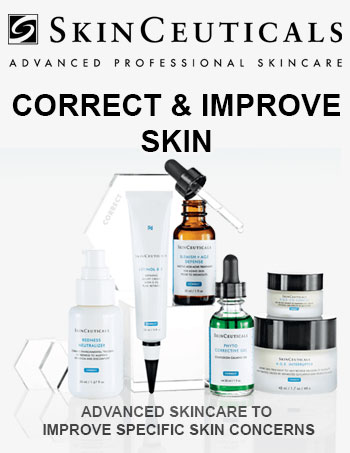Basal cell carcinoma: This skin cancer often forms on skin that has received years of sun exposure.
Basal cell carcinoma (BCC) is the most common form of skin cancer. More than two million cases of this skin cancer are diagnosed in the United States each year.
This skin cancer usually develops on skin that gets sun exposure, such as on the head, neck, and back of the hands. BCC is especially common on the face, often forming on the nose. It is possible to get BCC on any part of the body, including the trunk, legs, and arms.
People who use tanning beds have a much higher risk of getting BCC. They also tend to get BCC earlier in life.
This type of skin cancer grows slowly. It rarely spreads to other parts of the body. Treatment is important because BCC can grow wide and deep, destroying skin tissue and bone.
Basal cell carcinoma: Signs and symptoms
Basal cell carcinoma (BCC) shows up on the skin in different ways. That’s because there are different types of this skin cancer. If you see any of the following on your skin, you should immediately make an appointment to see a dermatologist:
- Dome-shaped skin growth with visible blood vessels. Often pink or skin-colored. Can also be brown or black or have flecks of these colors in the growth. Grows slowly. May flatten in the center, ooze, and crust over. Tends to bleed easily.
- Shiny pink or red, slightly scaly patch, especially when appears on the trunk. It grows slowly and may be mistaken for a patch of eczema.
- Waxy feeling, hard, pale-white to yellow or skin-colored growth that looks like a scar. Can be difficult to see the edges.
BCCs may look like a sore that:
- Bleeds easily.
- Won’t heal, or heals and returns.
- Oozes or crusts over.
- Has a sunken center, like a crater.
- Has visible blood vessels in or around it.
Although rare, BCC can feel painful or itch. Usually, the only sign of BCC is a growth on the skin.
Basal cell carcinoma: Diagnosis, treatment, and outcome
The only way to diagnose any type of skin cancer, including basal cell carcinoma (BCC), is with a skin biopsy. Your dermatologist can perform this procedure during an office visit.
A skin biopsy should not cause anxiety. To perform a skin biopsy, your dermatologist will remove the entire growth or part of it. Your dermatologist may send this to a laboratory or look at it under a microscope. The findings will be communicated in a biopsy report.
If the biopsy report states that you have BCC, your dermatologist will consider many factors to determine which treatment will be best for you. There are several ways to treat BCC:
Excision: This is a surgical procedure that your dermatologist often can perform during an office visit. It involves numbing the area to be treated and cutting out any remaining tumor plus some normal-looking skin around the tumor.
Like the skin biopsy, this removed skin is examined under the microscope. This may be done at a laboratory or by your dermatologist. The doctor who looks at the removed skin needs to see whether the normal-looking skin is free of cancer cells. If not, more skin will need to be removed. This is a common way to treat BCC.
Curettage and electrodessication: This treatment consists of two steps. First, your dermatologist scrapes away the tumor. Then electricity is used to destroy any remaining cancer cells. The two steps are then repeated.
Mohs surgery: Named for the doctor who developed this surgery, Mohs (pronounced “moes”) is a specialized surgery used to remove some skin cancers. It offers the highest cure rate for difficult-to-treat basal cell cancers. Your dermatologist will tell you if Mohs is right for you.
If Mohs is recommended, this is what you can expect. The surgeon will cut out the tumor plus a very small amount of normal-looking skin surrounding the tumor. While the patient waits, the Mohs surgeon uses a microscope to look at what was removed. The surgeon is looking for cancer cells.
If necessary, the Mohs surgeon will continue to remove a very small amount of skin and look at it under the microscope. This continues until the surgeon no longer sees cancer cells.
Cryosurgery: This treatment uses liquid nitrogen to freeze cancer cells, causing the cells to die.
Radiation: This treatment usually is reserved for BCCs that cannot be cut out, or when surgery may not be the best choice. A patient may need 15 to 30 radiation treatments.
Photodynamic therapy (PDT): This treatment uses light to remove early skin cancers. PDT is a two-step process. First, a chemical is applied to the skin. The chemical remains on the skin for some time so that it can be absorbed. Then the skin is exposed to a special light to kill the cancer cells.
Medicated creams: Creams that contain a drug, such as imiquimod or 5-fluorouracil, can be used to treat early BCC. A patient applies the medicated cream at home as directed by his or her dermatologist.
Pills: While extremely rare, there are reports of BCC spreading to other parts of the body. Patients who have BCC that spreads may be prescribed vismodegib. This medication also may be prescribed for patients who have advanced BCC that cannot be cut out or treated with radiation.
Outcome
Nearly every basal cell cancer can be cured, especially when the cancer is found early and treated.
Basal cell carcinoma: Tips for managing
If you have been diagnosed with basal cell carcinoma (BCC), your prognosis is excellent. Most BCCs are cured with the prescribed treatment.
Risks
- It is possible for BCC to recur. These BCCs are almost always cured with additional treatment.
- People who have had BCC have a higher risk for getting another skin cancer.
- To help patients manage these risks, dermatologists recommend the following:
Keep all follow-up appointments with your dermatologist. When found early, skin cancer usually can be cured. Even melanoma, the deadliest skin cancer, has a cure rate of nearly 100% when found early and treated.
Perform skin self-exams. Patients who are diagnosed with skin cancer are taught how to examine their skin for signs of skin cancer. Be sure to examine your skin as often as recommended by your dermatologist.
If you see anything on your skin that is growing, bleeding, or in any way changing, immediately call your dermatologist’s office. A change could be an early sign of skin cancer. Found early and treated, skin cancer can be cured.
Protect your skin from the sun and indoor tanning. This is essential to prevent further damage, which can increase the risk of getting another skin cancer. These tips will help you protect your skin:
- Wear sunscreen and lip balm that offer sun protection. Apply these daily, even in the winter, and be sure to use sunscreen and lip balm that offer:
SPF 30 or higher.
Broad-spectrum (UVA/UVB) protection.
Water resistance.
- Apply the sunscreen and lip balm to dry skin 15 minutes before going outdoors.
- Apply the sunscreen to every part of your body that will not be covered by clothing.
- Whenever possible, wear a wide-brimmed hat, long sleeves, and pants.
- Wear sunglasses to protect the skin around your eyes.
- Avoid outdoor activities when the sun is strongest — between 10 a.m. and 2 p.m.
- Avoid getting a tan and never use a tanning bed or sun lamp.




